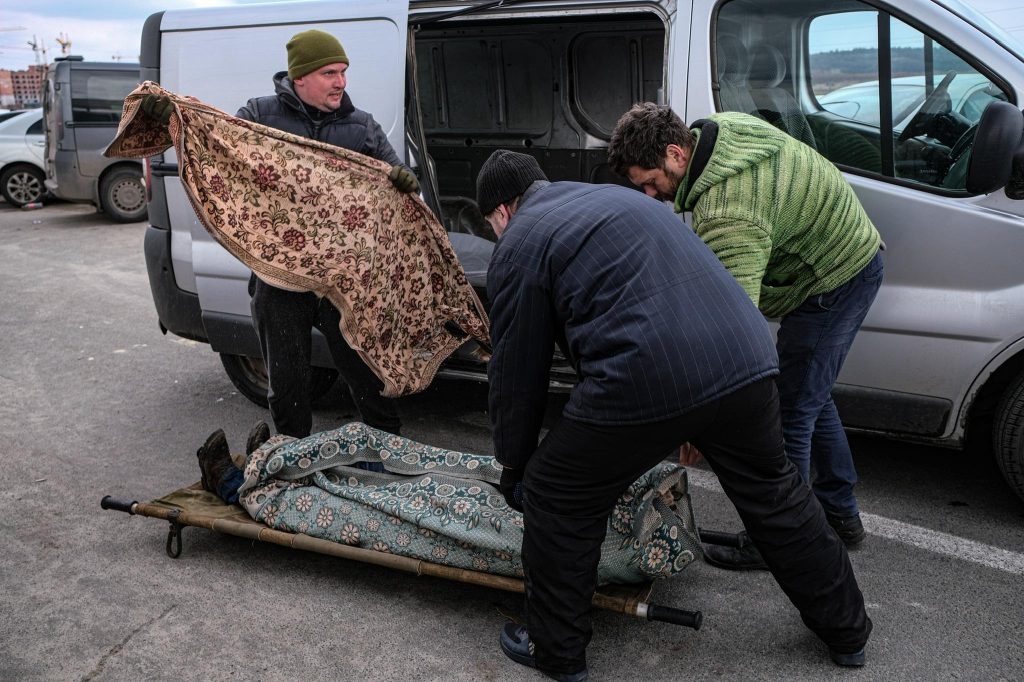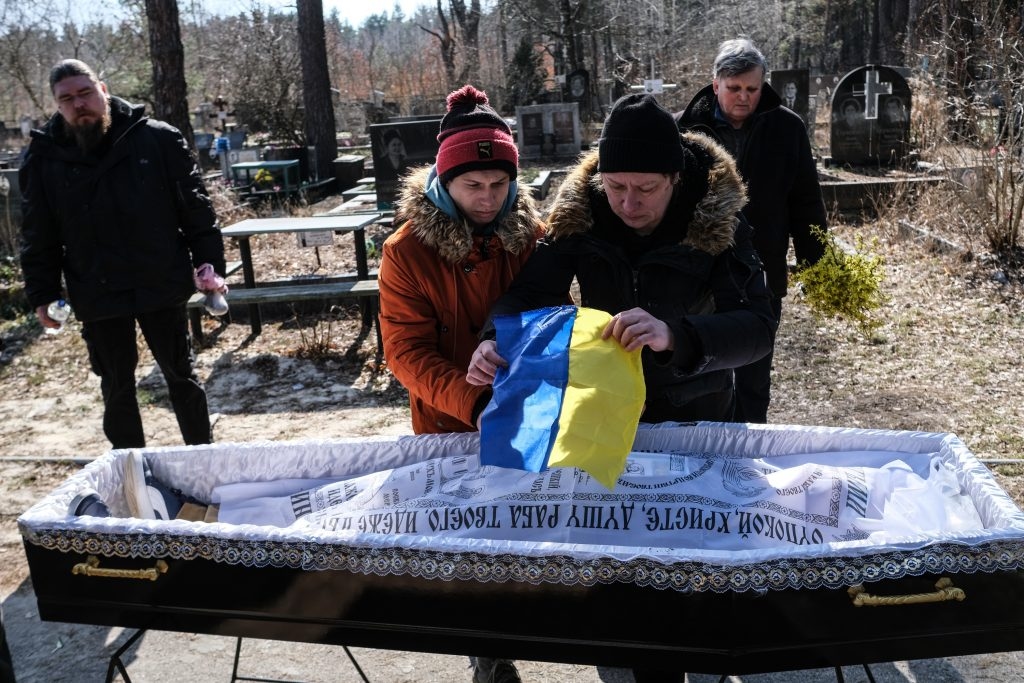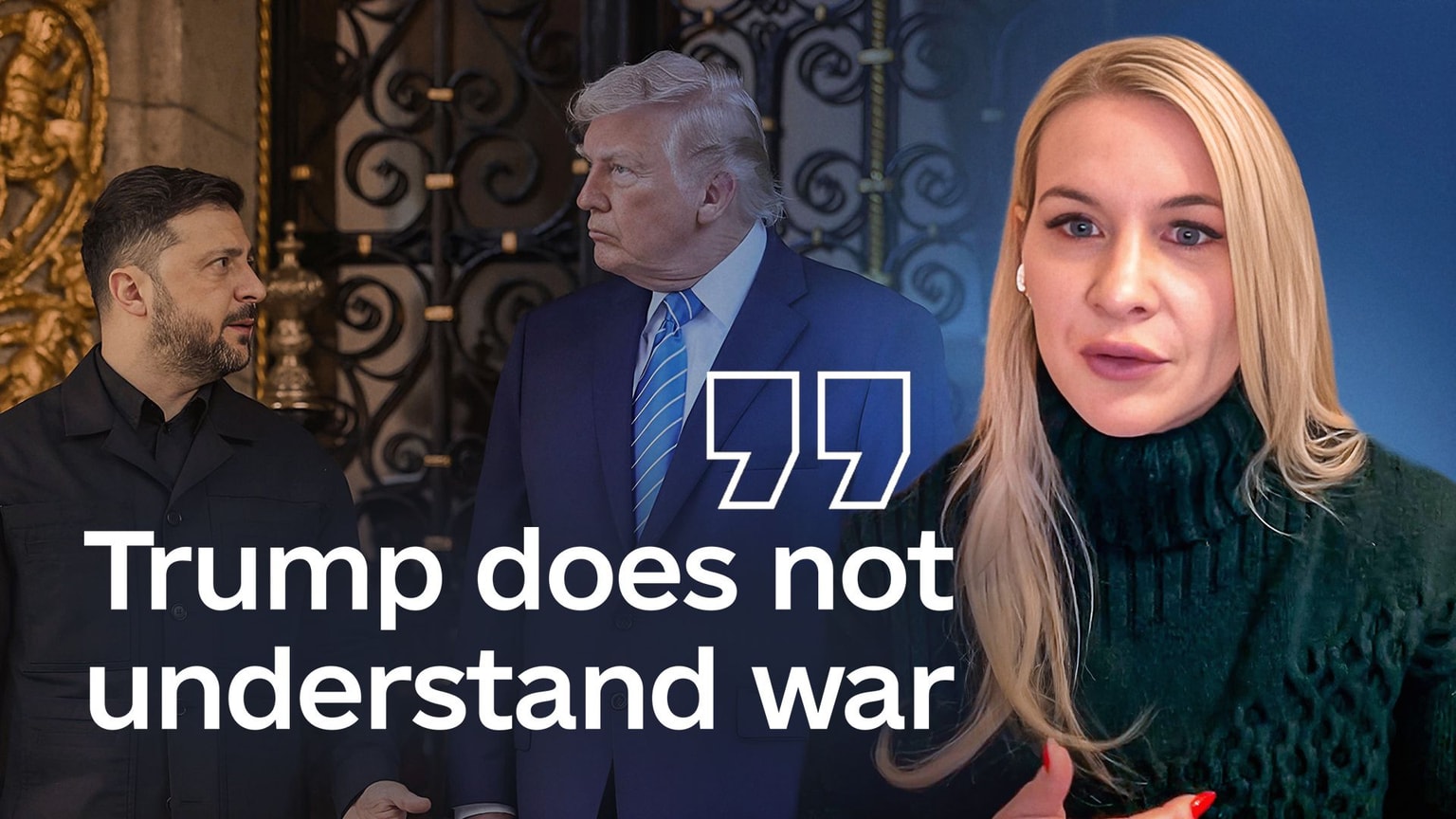Kyivans bury husband and father gunned down by Russian troops

Seven people gathered on March 14 in a tiny church in the hitherto flourishing downtown neighborhood of Podil.
The normally packed and bustling area stood eerily empty, like a set of a post-apocalyptic film. A frigid silence hunkered down over the district, interrupted occasionally by the faint thunder of the distant artillery, a reminder of why everyone was there.
Russia’s war on Ukraine has claimed another life.
Arkadiy Yasinskiy was no ranking officer or government official. He was a 63-year-old geophysicist and family man, who had gone to pick up some supplies and ended up in the wrong place at the wrong time – at the Russian soldiers’ gunpoint.
While the Russian commander waved Yasinskiy’s vehicle through, his men opened fire anyway. The once quiet Kyiv suburb, Stoyanka-2, was where Yasinskiy was killed.
“The year started off so well. If you had told me that I’d be standing at the morgue, requesting a coffin…” said his wife of almost 30 years, Elena Herhel. “I don’t know how I’m going to spend the next 20 years without him.”
Yasinskiy’s funeral
Some of the people that survived Yasinskiy couldn’t attend the funeral. His friend Dmytro, who accompanied Yasinskiy in his last moments, was still trapped in the war zone at the time. Yasinskiy’s son Andriy had been evacuated from the city, at his mother’s request.
“Andriy told me he was going to come to Kyiv for the funeral. I said ‘What? I barely sent you away,’” Herhel said.
She’d already lost her brother to a car accident in November. She couldn’t bear to risk losing her son as well.

On the day of the funeral, Herhel sat next to the open black casket placed in the middle of the tidy church, a heartbroken look on her face, gently stroking the edge of the coffin and whispering her husband’s name.
Some of the fallen man’s colleagues, as well as relatives of Dmytro, gathered around her.
The weary-looking priest, looking like he’s been doing many funerals over the past weeks, picked up his smoking censer and began to sing.
As the sonorous prayers mounted to the censer’s rhythmic swish, the sun came out from behind the clouds and its projector-like rays shot through the smoky interior. The teary faces around the room looked on at the pale, shaved-headed man in the coffin.
One question seemed to hang over the church – why did this man have to die?
Horrors of Stoyanka
Yasinskiy was a Kyiv native and lifelong resident. His geophysicist career took him to the arctic circle and beyond.
“He was a romantic,” Herhel told the Kyiv Independent. “He was always bringing dogs and cats home… for him, there was no such thing as ‘someone else’s pain.’”
When the war started, he wanted to fight, but his age made him unsuitable for Territorial Defense. He decided to volunteer instead.
When his oldest friend and former classmate, Dmytro, asked for some help in the urban village of Stoyanka-2, Yasinskiy did not hesitate to go, according to his wife.

Stoyanka-2, practically its own micro-neighborhood of the neighboring town of Irpin northwest of Kyiv, has seen intense fighting and shelling since the war began.
The triangle of the towns of Irpin, Bucha and Hostomel has seen some of the heaviest fighting along the Russian forces’ northwestern axis of attack and much of it spilled into this village.
On that day in early March, Yasinskiy and Dmytro decided to take their vehicle out to drop off some supplies and pick some up near the destroyed bridge to Kyiv, under which refugees have crossed into the relative safety of the capital since the war began. The friends gave a ride to some of the refugees as well.
Soon, the Ukrainian troops advised them to head back quickly, fearing that something was going to happen. While the pair were only at the bridge for a few minutes, they realized that the situation had already changed. On their way back, they saw a burnt-up police car that wasn’t there earlier.
Then, they saw the three armored vehicles, marked with the letter ‘V’ in front of them. Russian soldiers at the temporary checkpoint stepped forward with their guns.
“We raised our hands,” Dmytro told the Kyiv Independent. “The commander or someone waved for us to pass with his right hand. And behind him, they began to shoot.”

He reflexively stepped on the gas but the engine had been hit and quickly stopped working. The van coasted to a stop about 100 meters past the soldiers. Dmytro felt his blood trickling from his side, though he couldn’t remember feeling any pain.
“I said: Arkasha, are you still alive? He said ‘I don’t know yet.’” Those were Yasinskiy’s last words.
Dmytro opened the passenger side door and his friend fell out. When he tried to drag him away, the Russians opened fire again. By a blind stroke of luck, his neighbor happened to be driving in the opposite direction at that moment and decided to pick him up. A surgeon who was visiting a neighbor patched him up.
For all of Dmytro’s reluctance to leave his property in Stoyanka-2, he eventually was forced to evacuate to Kyiv days after his friend's funeral, when the shelling intensified to an unbearable degree.
Yasinskiy’s body remained on the ground for four days before Dmytro’s nephew could pick it up.
After the service wrapped up, with the priest asking for God to forgive Yasinskiy’s sins and bless the defenders of the Ukrainian homeland, a small Ukrainian flag was draped over the dead man’s body. Herhel kissed him goodbye.
He was laid to rest at Lisove Cemetery, near Kyiv's Troieshchyna neighborhood.











